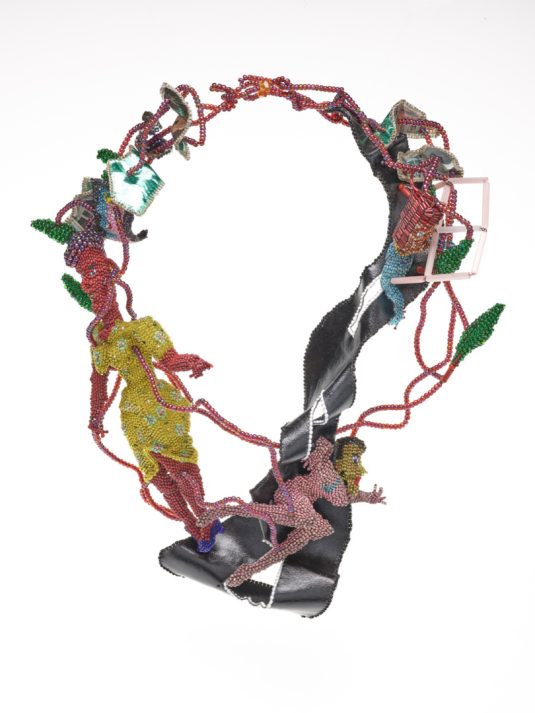
Joyce J. Scott: Walk a Mile in My Dreams
Seattle Art Museum, Seattle, WA - To Jan 19, 2025
Joyce J. Scott is an activist-artist who chooses her media and materials deliberately, for their cultural references. Racism, feminism, body-shaming and gun violence are ongoing themes in her work. She presents challenging subjects with biting wit in a sort of bait and switch, drawing the viewer in with beauty, color and tongue-in-cheek humor, then confronting them with somber, scary truths.
This 50-year retrospective is co-produced by the Seattle Art Museum and the Baltimore Museum of Art. Scott was born, raised, educated and still lives in Baltimore, where she remains deeply rooted in her community. Her grandparents were former slaves. Her mother, the artist Elizabeth Talford Scott, learned the traditional crafts of quilting, sewing and weaving and passed them on to her daughter. Scott refers to them as her inheritance. Early in her career, she created clothing, quilts and woven textiles in tribute to this familial history. In The Threads That Unite My Seat to Knowledge (2024), Scott uses her heirloom family quilts to create a “storytelling environment” within the exhibition.
In the 1970s, a Native American artist taught Scott peyote stitch, a type of beadwork. She raised the technique to another level, producing her best-known body of work, a series of sculptural necklaces and later, free-standing figures and tapestry-like wall hangings. A 1992 residency at the Pilchuck Glass School led her to combine beadwork with blown glass in sculptures such as Head Shot (2008). Sinister narratives lurk in these colorful translucent pieces.
Alongside her visual art practice, Scott created and toured solo and collaborative performance works presenting serious subjects in vaudevillian comedy skits, documented here in video footage and artifacts. In the late 1990s, Scott added printmaking to her repertoire. Prints from her Soul Erased (1999) and Obama (2012) series are on view.
Every aspect of Scott’s art contributes to its meaning. The intelligence, creativity and passion sustained in her work have brought her numerous honors, capped by a MacArthur "genius" grant in 2016. Curator Catharina Manchanda describes the artist’s “incredibly strong conviction that every artwork has a role in bringing people together and offering people an opportunity to learn together.”
Free drop-in workshops Nov 9 & 16, Dec 14 and Jan 11, 11am–2pm

